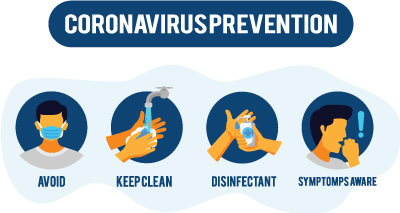Treatment of Periodontal Disease
Treatment of Periodontal Disease in San Antonio
The Basics of Periodontal Disease
Gum disease is an infection of the periodontal tissues that provide support for the teeth. These tissues include the gums, periodontal ligaments and the jawbone. Also called periodontal disease, this condition begins with bacteria-ridden plaque irritating the gum tissues. If this plaque is not removed with thorough brushing and flossing, it will turn into a hard substance called tartar. Once this happens, you can no longer sufficiently clean your teeth on your own because tartar must be removed by a dentist or dental hygienist with a special instrument. If tartar is allowed to build up around the gumline, it will break the healthy attachment between the gums and the teeth, allowing bacteria and plaque to collect under the gums and along the tooth roots. These openings at the gumline are called periodontal pockets, and once they form, you run the risk of losing your teeth if you do not seek treatment from your dentist, dental hygienist or periodontist.
Oral-Systemic Health
The mouth is crucial to the overall health of your body. From the air you breathe to the foods you eat, numerous toxins enter your body via your mouth. The oral bacteria that run rampant in gum disease can also enter the body and affect your overall health.. Oral bacteria can also enter the bloodstream through damaged gum tissues, and researchers have found traces of these bacteria in the brains of Alzheimer’s patients and in the arteries of heart disease patients. Because gum disease is a chronic condition, patients should do everything in their power to prevent it from developing and affecting their general health.
Stages of Gum Disease
Gingivitis is the first stage of gum disease, and it is the only stage that is reversible. It is characterized by red, swollen, bleeding gums, bad breath and a foul taste in the mouth. • Periodontitis is the second stage and occurs when periodontal pockets form and bacterial toxins begin to destroy the tissues and supporting bone around the teeth, causing irreversible damage. At this point, symptoms can be controlled but the gum disease is a chronic condition. • Advanced periodontitis is the final stage of gum disease, occurring when the bone and periodontal ligaments supporting the teeth deteriorate significantly and cause loosening of the teeth. Without aggressive treatment, tooth loss is likely to occur in this stage.
Gum Disease Risk Factors
Patients with the following conditions or lifestyle factors are at a high risk of developing periodontal disease:
- Tobacco and alcohol, use
- Inadequate oral hygiene
- Puberty, pregnancy or menopause
- Diabetes, heart disease, respiratory illness, certain cancers or osteoporosis
- Use of steroids, oral contraceptives, chemotherapy drugs or calcium-channel blockers
- Non-Surgical Treatment of Gum Disease
The effects of gingivitis can be reversed with good brushing and flossing habits and a professional teeth cleaning performed by your dental hygienist or dentist. In the more advanced stages of periodontal disease, your dental professional will likely perform a scaling and root planing procedure, which consists of removing plaque and tartar below the gumline. Also called a deep cleaning, this procedure involves removing the bacterial toxins on the surfaces of the tooth roots to help the gums reattach to the teeth and eliminate periodontal pockets. Your dentist may also prescribe antibiotic therapy and antimicrobial mouth rinses to aid in the healing process.
Surgical Treatments for Gum Disease
If scaling and root planing do not successfully halt the progression of gum disease, you’ll need to see a periodontist for one or more of the following treatments:
Flap Surgery: Also called pocket reduction surgery, flap surgery involves pulling the gums away from the teeth and removing tartar and bacteria near the damaged bone. The bone tissues may be smoothed to create a an environment for healing, and the gums are repositioned over the teeth and sutured in such a way that a pocket no longer exists.
Bone and Soft Tissue Grafts: In cases where the jawbone and gum tissues have deteriorated, grafted tissues are placed at the site of the damage to stimulate regrowth.
Guided Bone Tissue Regeneration: Performed in conjunction with flap surgery, a tiny piece of mesh is placed between the damaged gum and root surface so that the gums will not grow into the void left by the bone deterioration. This allows both the gums and the bone tissues to regenerate normally for optimal support of the teeth.


 We will be disinfecting all counters, door handle and hard surfaces in the waiting room at regular intervals. Also, we will ask all patients to use disinfection wipes that the front desk team members will provide before signing in and checking out. We as a rule disinfect hard surfaces and equipment in our operatories based on infection control guide lines.
We will be disinfecting all counters, door handle and hard surfaces in the waiting room at regular intervals. Also, we will ask all patients to use disinfection wipes that the front desk team members will provide before signing in and checking out. We as a rule disinfect hard surfaces and equipment in our operatories based on infection control guide lines. Please keep your regular dental appointment if you are not ill or have not come into contact with ill patients.
Please keep your regular dental appointment if you are not ill or have not come into contact with ill patients.